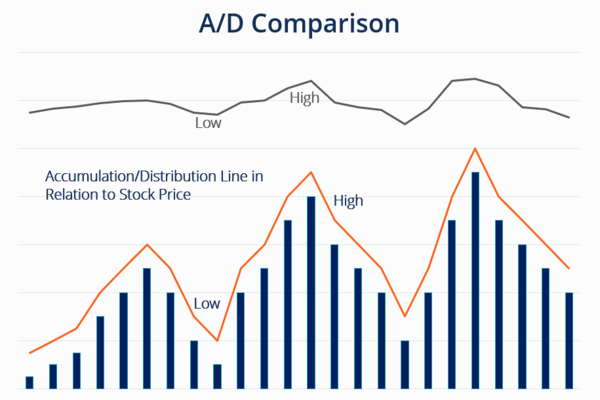This article will explore two common investment tools: stocks and bonds, to
help you have a clearer understanding of company stocks and bonds and their
relationships with investors.
Firstly, let's review what stocks are. A stock is a partial ownership
certificate sold by a company to investors to raise funds. They represent the
proportion of shares held by investors in the company. However, bonds are a
lending tool issued by companies in need of funds, and investors can receive
regular interest upon purchase. A bond is a contract that proves the borrower's
debt. In short, purchasing stocks is equivalent to becoming a shareholder of a
company, while purchasing bonds is equivalent to becoming a creditor of the
issuer, just like borrowing from a bank.
Now, we know that when a company needs funds, there are two methods to choose
from. One is to borrow money, which means debt, and the other is to sell the
company's shares, making investors shareholders of the company, which means
selling ownership of the company. We can compare it to the balance sheet of
Xiaoming Supermarket. On the left is the total assets of the company, and on the
bottom right is the ownership of the company, which is the stocks sold by the
company. Assuming the company sells 10,000 shares, if you own one share, you
will own one tenth of the company, equivalent to a value of 400 yuan per share.
The liability area may indicate that the company has borrowed $6 million from
the bank, which may require repayment after ten years, including interest.
Issuing bonds is similar to this, except that their borrowing targets are
ordinary investors in the market and may be purchased by many people. Suppose
the company wants to issue 6,000 bonds, each worth 1000 yuan. Therefore, if I
purchase a bond, it is equivalent to lending money to this company. After the
bond matures, this thousand yuan will be returned to me, and of course, during
the period, the interest promised at the time of issuance will be paid to me. Assuming the interest rate is six percentage points, a total of 1600 yuan can be
recovered after ten years. Like stocks, you can also sell bonds to others in the
bond market before they mature.
So, if I hold stocks, I will own a portion of the company's shares. When
holding equity, the company cannot guarantee that dividends or bonuses will be
paid. If the company decides to distribute dividends or bonuses, both I and
other shareholders will receive corresponding returns. However, if the company
goes bankrupt, all shareholders will suffer losses. It is worth mentioning that
if the company goes bankrupt and cannot continue operating, they will first
repay the debt of the bondholders, and if there is still a balance, they will
return it to the shareholders who purchased the company's shares.
Now we have a better understanding of the relationship between stocks, bonds,
and companies. Next, let's compare their respective strengths and weaknesses, as
well as their historical return rates. The advantages of stocks lie in their
potential high returns and potential dividends or dividend income. But their
drawbacks are high risk and high price fluctuations. If the company goes
bankrupt, shareholders will eventually receive compensation. The advantage of
bonds is that you know the interest rate before purchasing them and will receive
interest on time, making their prices relatively stable. If the stock market
plummets, it usually leads to an increase in bond prices, and bond interest
rates are generally higher than bank deposit rates. However, the downside of
bonds is that if the company goes bankrupt, you may not be able to recover the
principal. In addition, if interest rates change significantly, it may lead to
losses.
Let's take US stocks and US bonds as an example to compare their historical
returns. Although the performance of the United States may not be the most
outstanding, its stability is worth mentioning. From 1802 to 2012, the average
annual return on US stocks was 8.1%. That is to say, if you invest $1 in 1802,
it will grow to $1348,000 by 2012. The average annual return of US bonds is
5.1%, and the US $1 will grow to US $33922. If adjusted for inflation, the
average annual return on stocks is about 6.6%, and the average annual return on
bonds is about 3.6%. Although these data may seem similar, it should be noted
that they have already taken into account inflation factors.
If we look at the data from 1990 to 2012, there have been two major stock
market crashes during this period of 20 years. The collapse of the real estate
market has led to a sharp drop in interest rates. The global stock market
increased by 5.4%, the global bond market increased by 1.8%, and the US stock
market increased by 6.2%, while the US bond market increased by 2.0%. These data
have also been adjusted for inflation, so there is not much difference compared
to the previous two hundred years.
Comparison of stocks and bonds
|
Stocks |
Bonds |
| Definition |
Partial ownership proof |
Debt instrument |
| Ownership |
Shareholders |
Bondholders |
| Interest or Dividends |
Possible, uncertain |
Regular interest payments |
| Risk |
High risk, price volatility |
Lower risk, price relatively stable |
| Returns in case of Company Bankruptcy |
Compensation received last |
May not recover principal |
| Investor Status |
Shareholders, ownership of company |
Bondholders, lending to the company |
| Market Performance |
High returns, high risk |
Lower returns, lower risk |
| Historical Returns |
High annual average returns but high volatility |
Lower annual average returns, relatively stable |
After reading these comparisons and historical returns, you may think, Why
invest in bonds when the return on stocks is much higher than that on bonds? In
fact, theoretically speaking, you are right, but please don't forget that
everyone's age and risk tolerance are different. Both the technology boom in
2000 and the financial crisis in 2008 led to the serious collapse of the stock
market. If people who were about to retire at that time lost most of their
pension funds, what should they do in the future? In addition, many investors
always buy stocks when the market reaches its peak and then sell them at the
lowest point. Even if the stocks slowly rebound in the future, it is difficult
to make up for losses. Therefore, when investing, balance is crucial, and you
need to make different adjustments based on your age and risk tolerance, which
is the healthy financial philosophy.
Disclaimer: This material is for general information purposes only and is not intended as (and should not be considered to be) financial, investment or other advice on which reliance should be placed. No opinion given in the material constitutes a recommendation by EBC or the author that any particular investment, security, transaction or investment strategy is suitable for any specific person.






